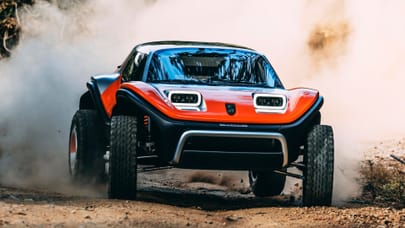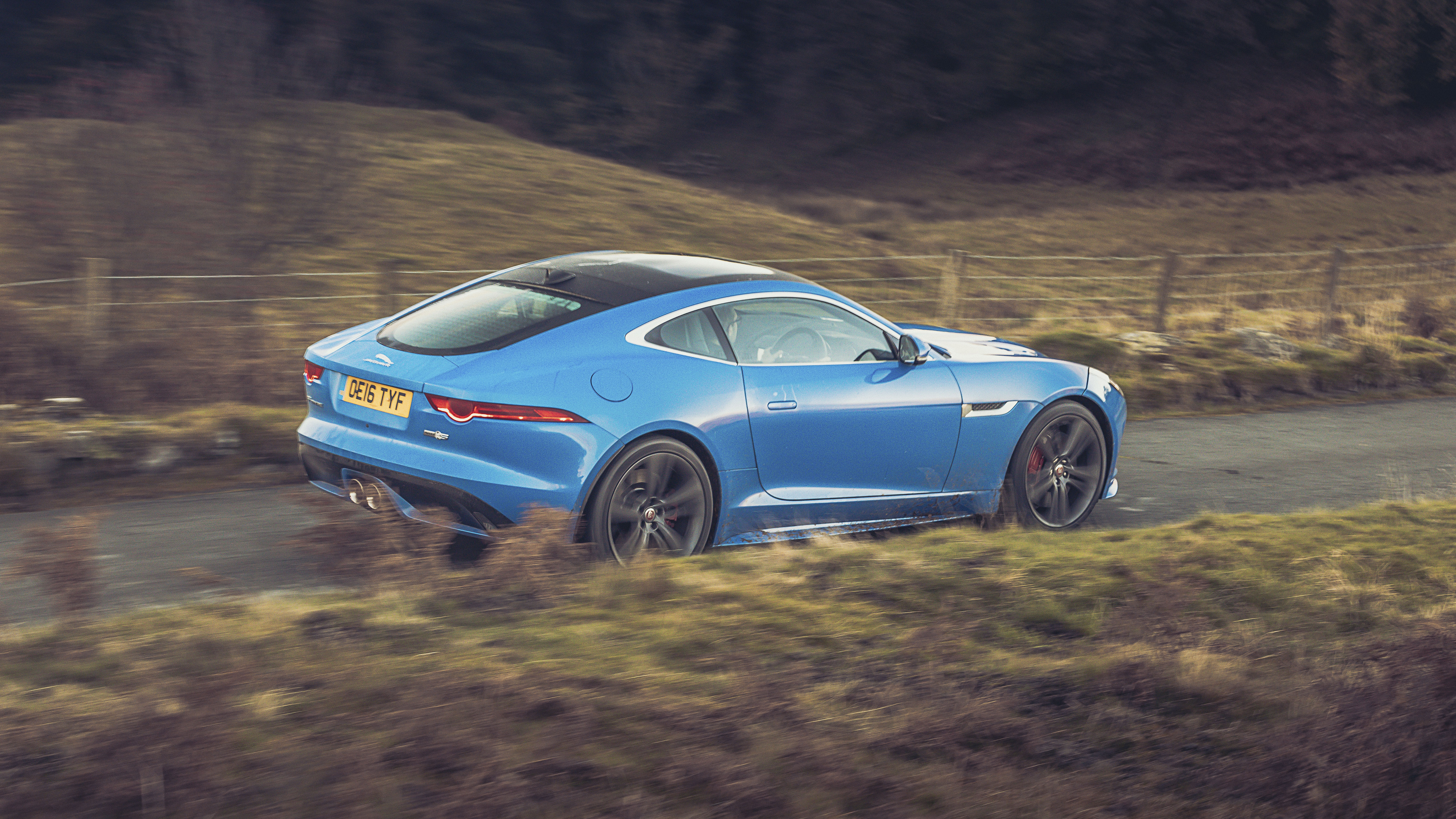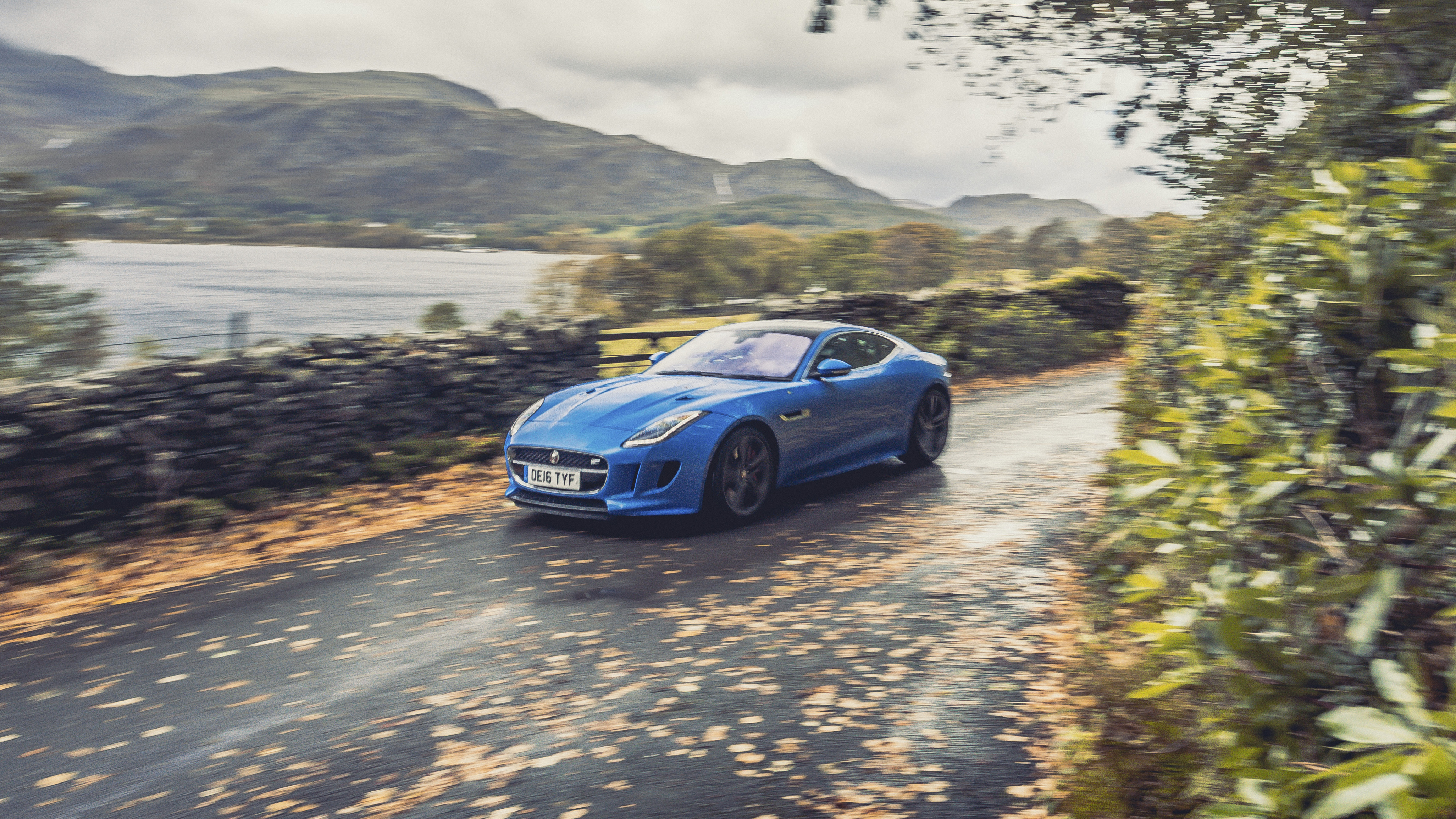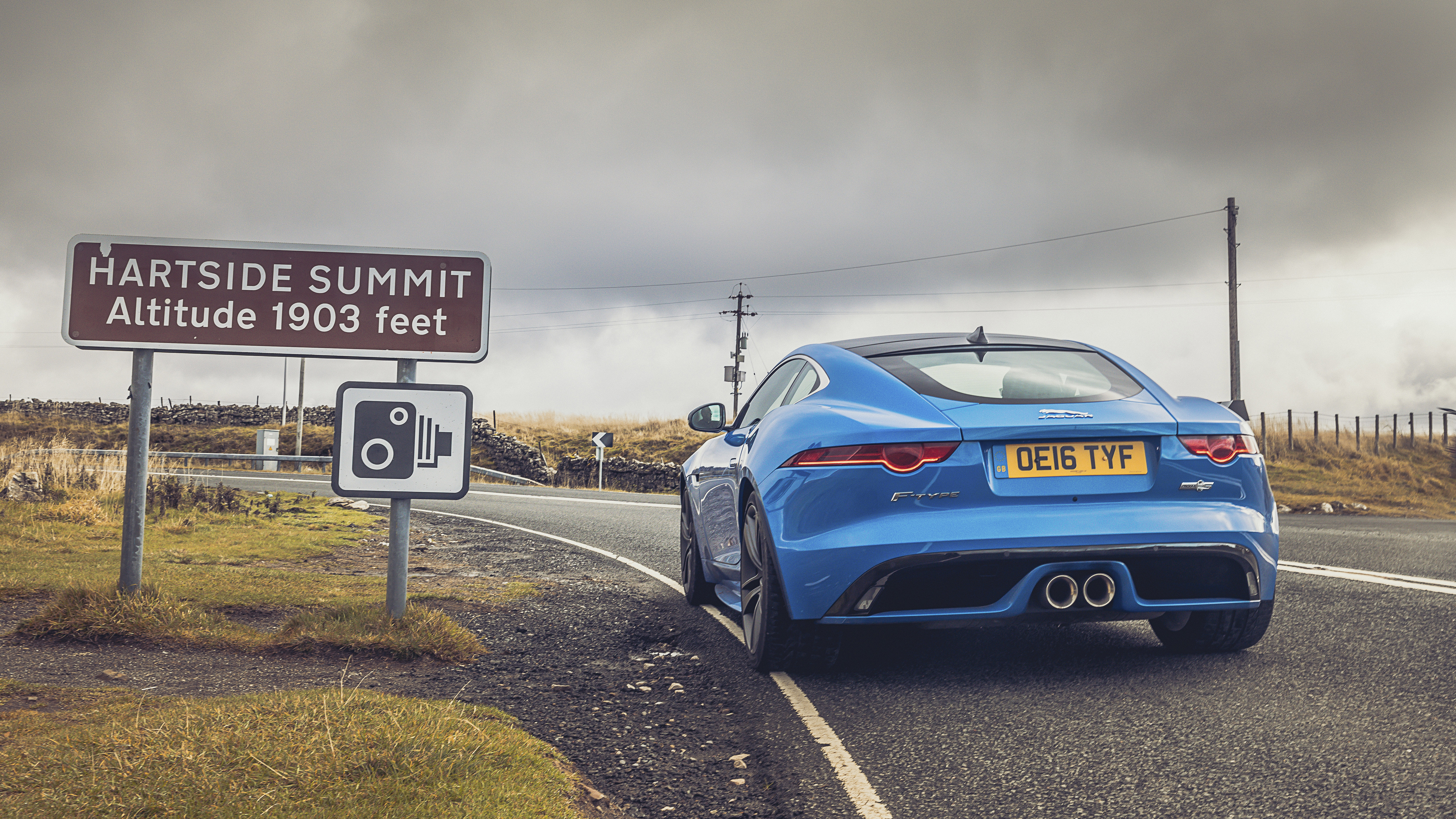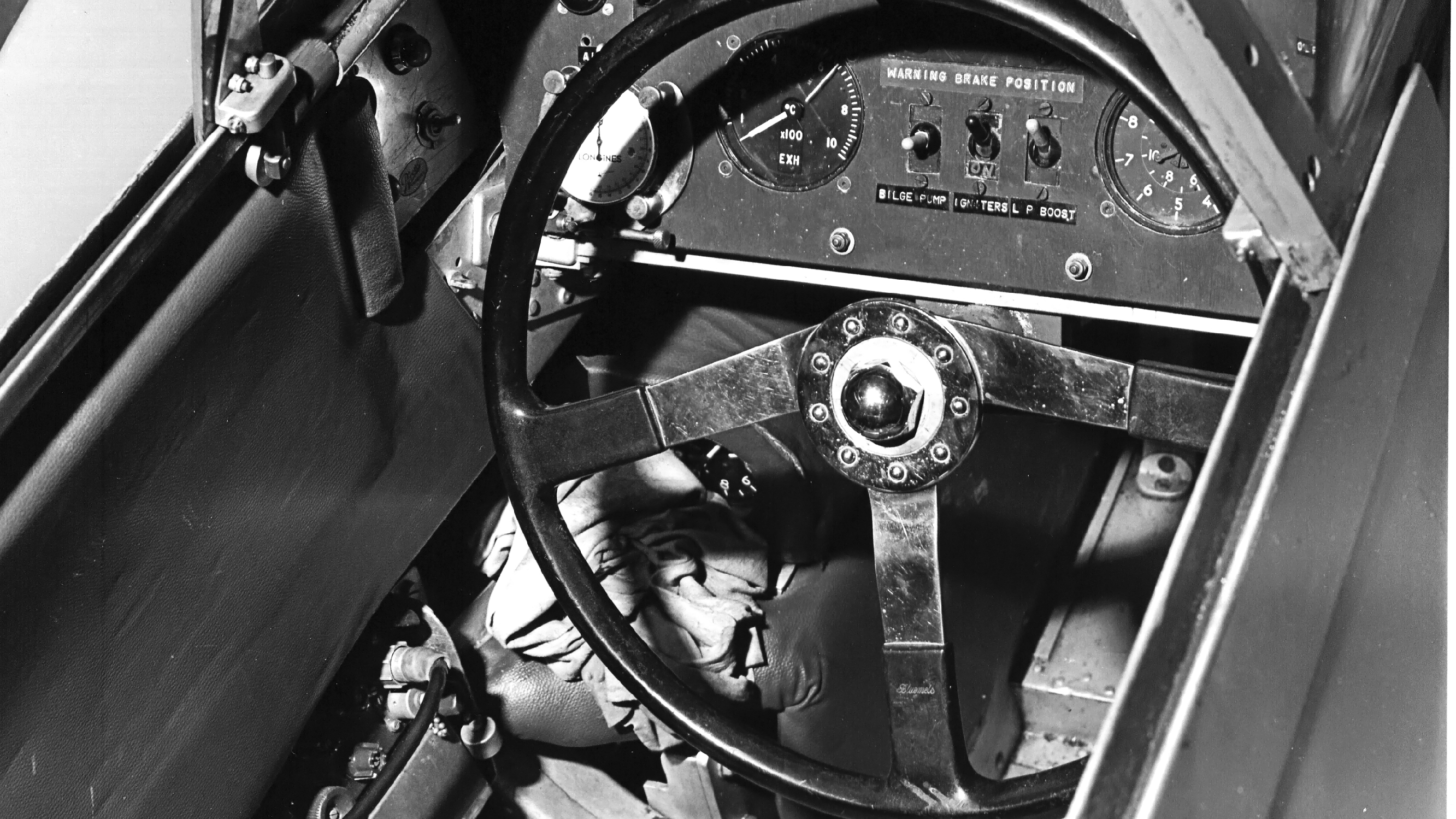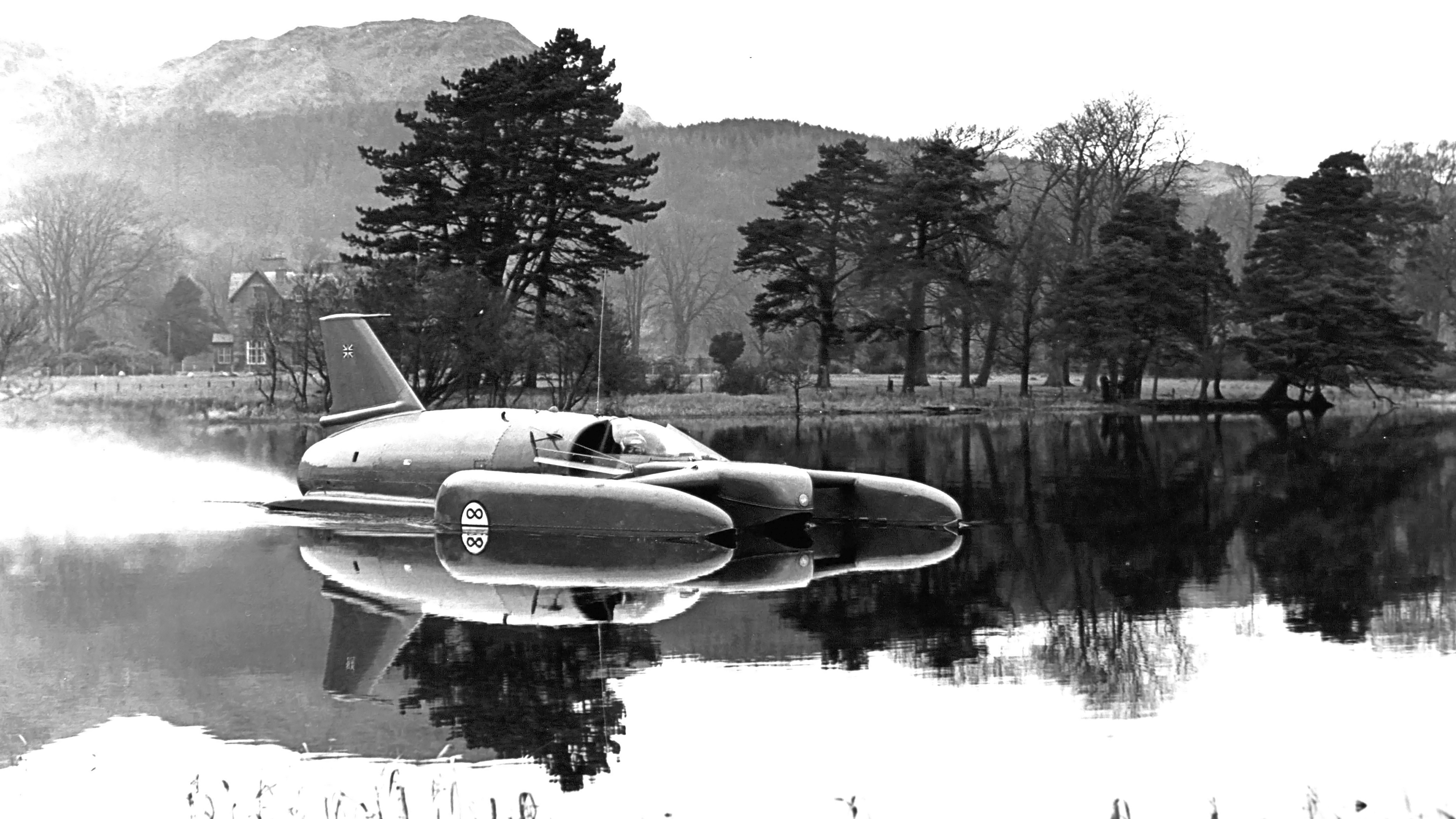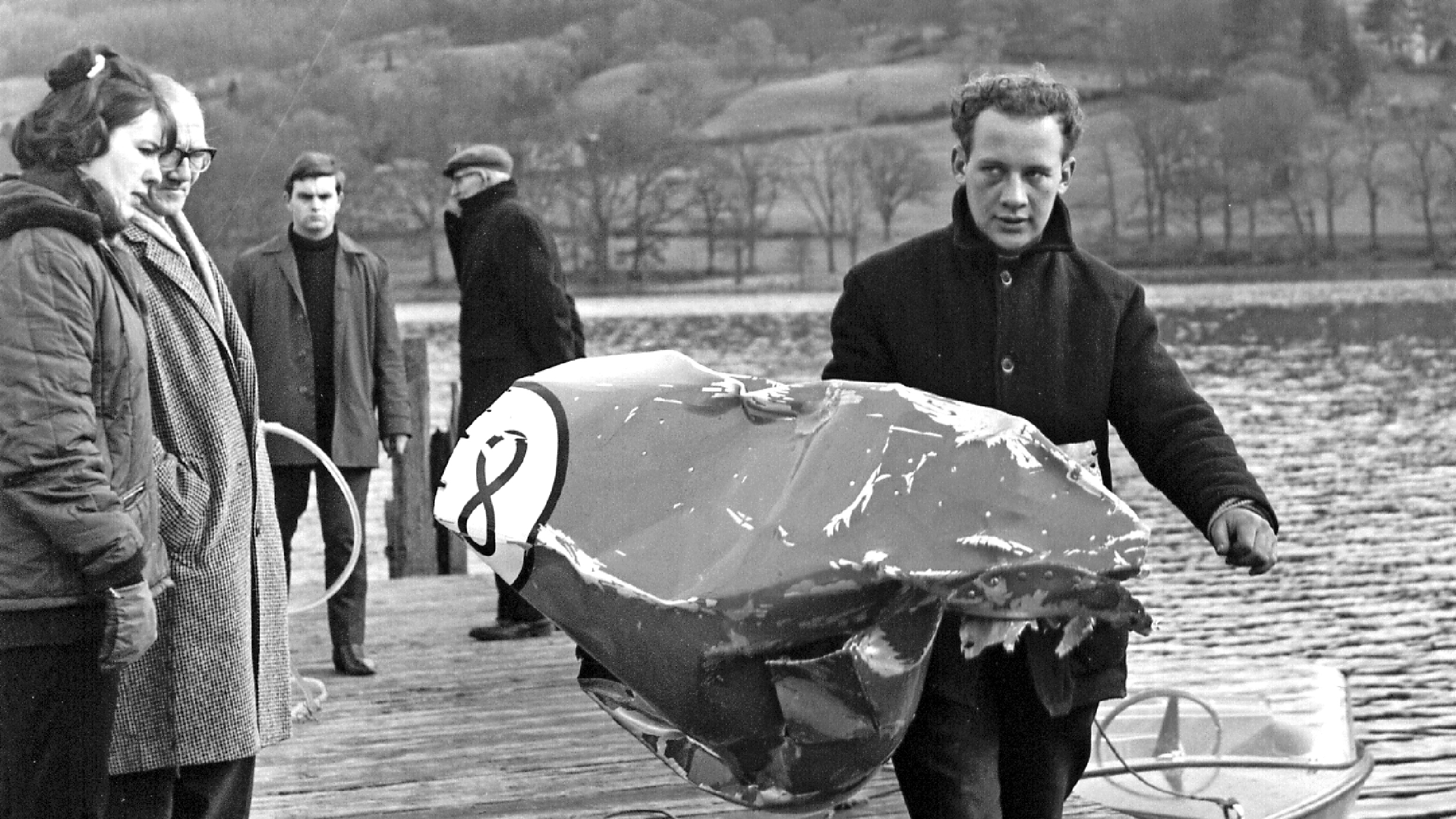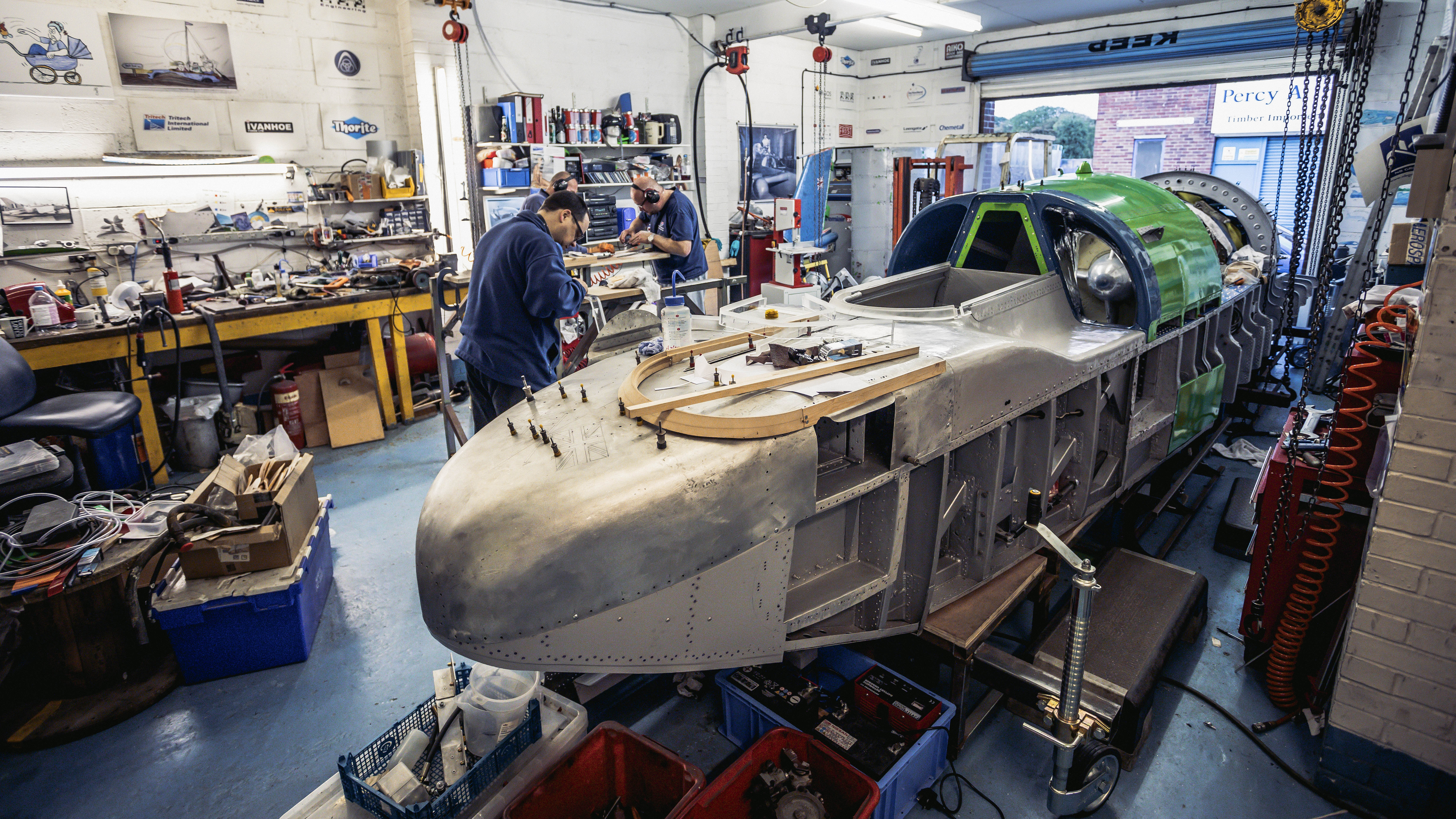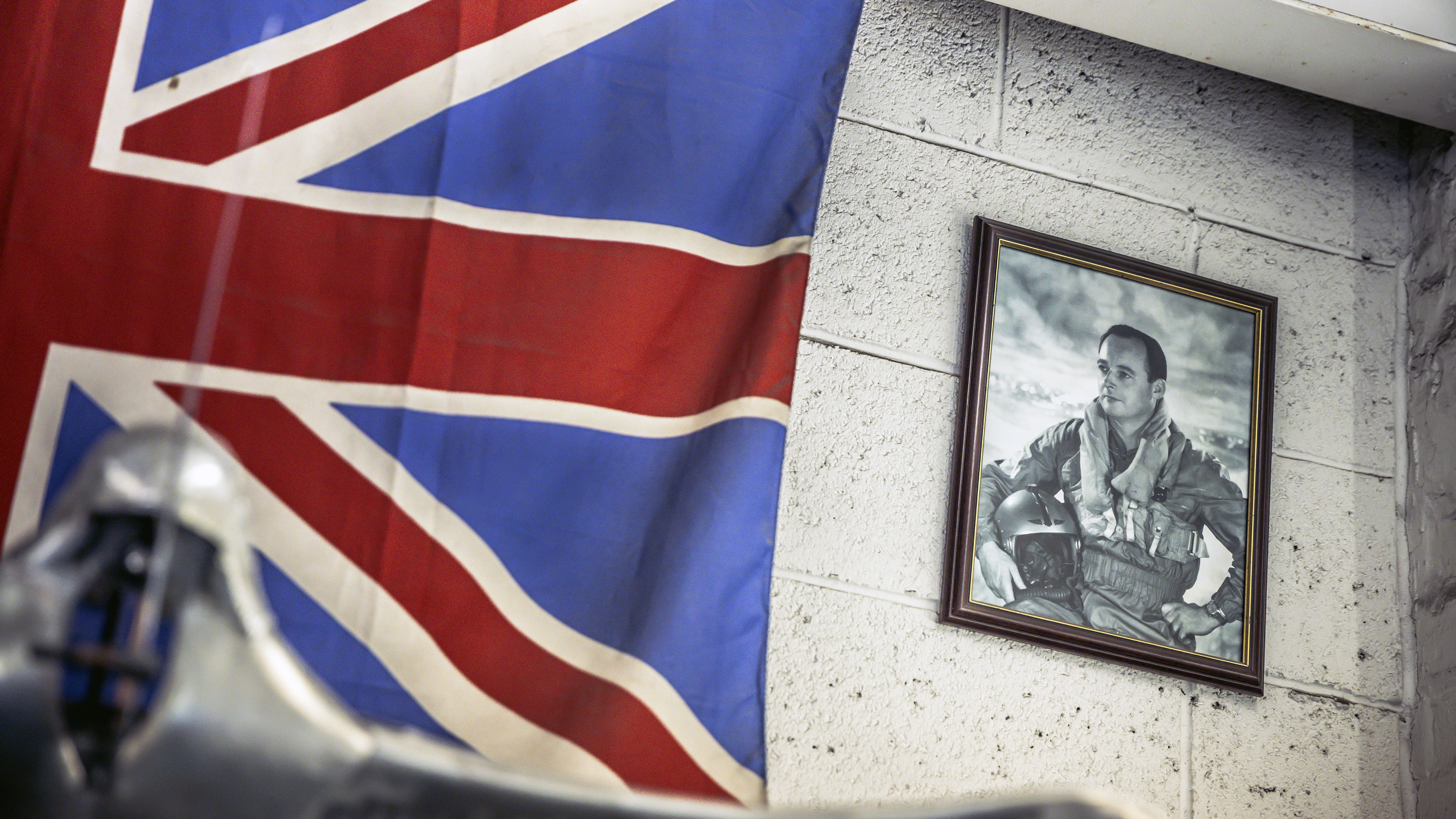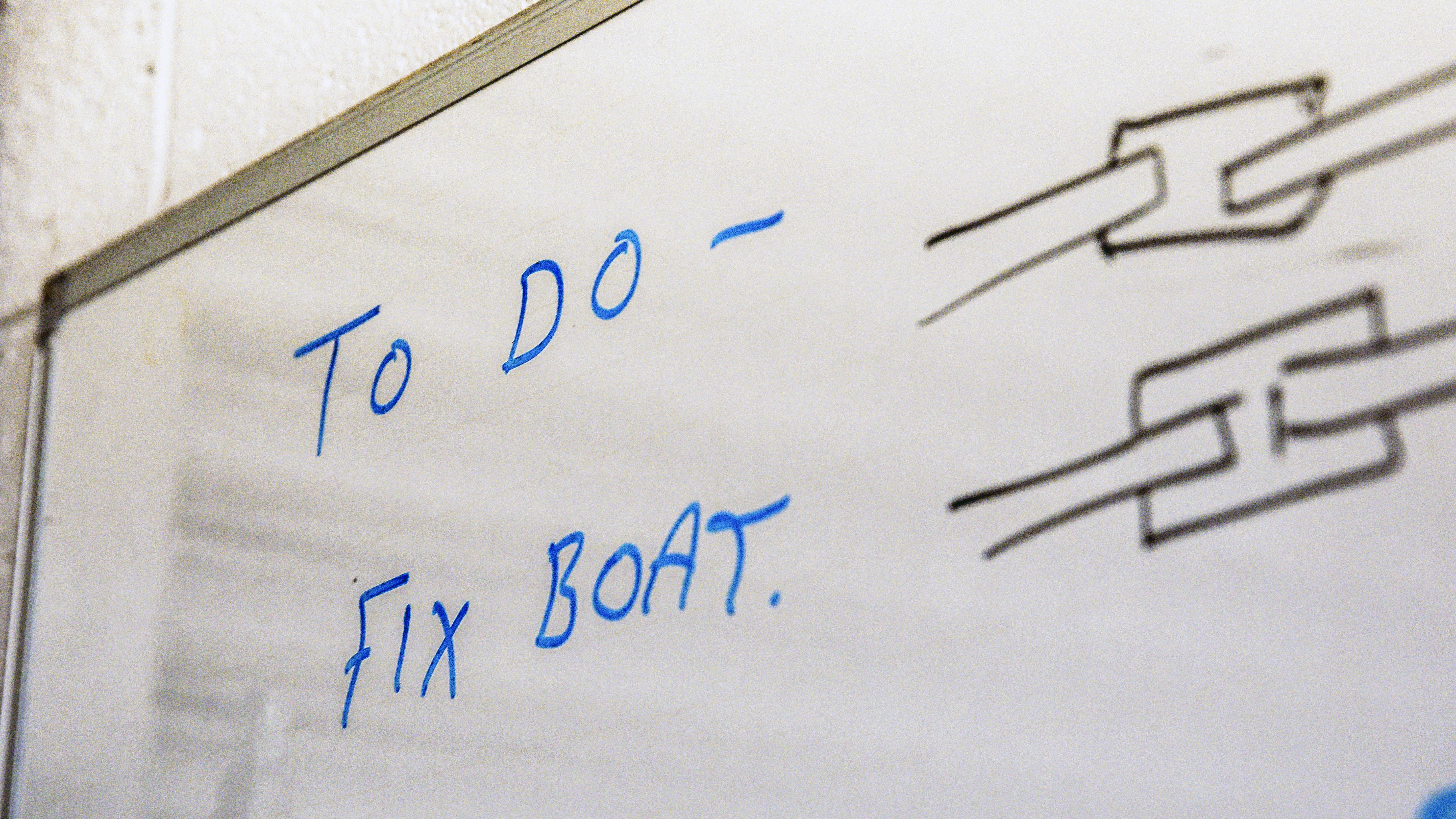
Chasing speed records in a Jaguar F-Type
TG returns to the site of Donald Campbell's 300mph crash to pay homage
“If I have to go, old boy, I hope I’m going ruddy fast at the time.” So said Donald Campbell on New Year’s Eve 1966, as he hosted a party in Coniston, the town closest to the lake that was home to many of his water-speed records. Days later, the Speed King’s unintended wish would so infamously come true.
On 4 January 1967, just before 9am, Bluebird K7 left the surface of Lake Coniston shortly after hitting an estimated 328mph. It sank within seconds, Campbell dying in his attempt to take the water-speed record above 300mph. Desperate for success, he’d wanted to make headlines at the London Boat Show which opened hours later. He did, but they were of a far more sombre nature.
“That amazing accident and the visuality and finality of it, and his talking the whole way through as this thing was cartwheeling to its death, I think really stuck in people’s minds,” says his daughter, Gina Campbell. “Things like that weren’t caught on camera in 1967. I think it’s immortalised him in record-breaking.”
Words: Stephen Dobie // Photography: Mark Riccioni
Campbell, it must be noted, was a car guy. His desperation to be the first man past 300mph on water wasn’t merely to ward off the criticism of British newspapers, as eager to tread on their sporting heroes as they are today. It was to raise publicity for a considerably more ambitious record: topping 800mph on land with a car named Bluebird CN8. Fifty years after his death, Bloodhound SSC has the same target.
He also liked his road cars. A rogue Mercedes-Benz 300SL Gullwing aside, Campbell’s car history looks proudly British, with Jaguar the prevalent name. He used an XK150 to test out the Australian salt bed he’d take wheel-driven cars above 400mph upon with Bluebird CN7, while back on British shores, a MkII and E-Type were his most famous daily drivers. In fact, a blue E-Type coupe is one of the eeriest props of the Pathé news clip which dramatically reported his death in 1967. Because what’s more final than seeing the car he parked up beside Bluebird’s slipway at Pier Cottage, which he’d never return to?
It’s where I stand now, observing an F-Type coupe painted a blue remarkably close to K7’s. It’s a coincidence, rather than an opportunistic special. And in truth, Bluebird record-breakers were painted whichever hue of blue paint was most financially accessible, though the Ultra Blue of this British Design Edition is closest to how everyone imagines K7 on that final run.
In 1964, Donald became the only man to break both land and water records in the same year, both Down Under
I’d like to think Donald would approve. He was a patriotic man, who wanted to break records for British industry as much as himself. The son of a record-breaker – Sir Malcolm Campbell – he followed the same, perilous career path after failing to make the grade as a pilot in World War II on health grounds. Bitterly disappointed, some surmise he needed something else to fight, and he chose the water.
With the sun finally visible, photographer Mark Riccioni is retaking images we’d already shot earlier, when the car was barely visible through peeing-down rain. But our frustrations are trivial when you take into account the greater havoc the Lake District’s endlessly changeable weather played on Campbell’s record attempts. They could stretch out for weeks owing to bad conditions, to the chagrin of the impatient press. In fact, Campbell’s rotten luck even saw an arid Australian lakebed suffer its first rain for 15 years when he turned up for his go at the land-speed record.
Still, in 1964, Donald became the only man to break both land and water records in the same year, both Down Under. He achieved the former at 403.1mph in Bluebird CN7, the latter at 276.33mph in Bluebird K7. It was his crowning achievement.
Coniston is a small town, and on a dank autumn day, the only evidence of the Lake District’s keen tourism industry can be found behind the steamed-up windows of tea rooms. But back in the Fifties and Sixties, when Donald’s record chasing was at its peak, it was a different story. While record attempts were never publicised as such, crowds would assemble to watch Bluebird run up and down the slender body of water.
Top Gear
Newsletter
Thank you for subscribing to our newsletter. Look out for your regular round-up of news, reviews and offers in your inbox.
Get all the latest news, reviews and exclusives, direct to your inbox.
Though his dad lived through the true heyday of record-breaking, Donald was still a hero, not least to schoolboys. Anthony Robinson grew up around Campbell; the Speed King would often stay with the Robinson family when he was in Coniston during record attempts, and in later days “Robbie”, as Donald affectionately called him, became one of the crew.
“When he went through the village in the morning down to the boat shed, everybody knew him,” Anthony recalls. “And he would always go into schools and talk for an hour in the morning.”
Campbell’s most public image was of an eloquently spoken gentleman with a glamorous, well-heeled lifestyle. But those who knew him best saw beneath what became known as “the mask”. In truth, he was an overgrown version of the kids he was idolised by. Anthony recalls an example of such behaviour on Christmas Day just before Donald’s death. With the record-breaking crew all with their families, he solved his itchy feet by giving K7 an impromptu, unsupervised run on the water, “Robbie” by his side.
“There are lots of stories about that,” Anthony tells me. “People said he nearly broke the record. A journalist who lived over in Ambleside said he heard it start up that morning, and rushed across. By the time he arrived we were just putting Bluebird back to bed.” Ambleside is 20 minutes away by car, it must be pointed out. “It was quite noisy, yes. When it started up you’d hear it for miles around...”
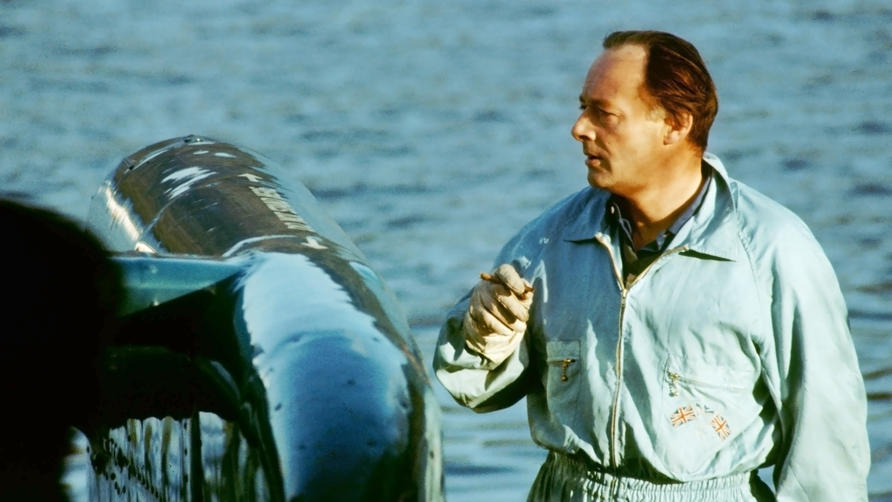
While attempts at the water-speed record were rarely public knowledge beforehand, everyone knew what Donald’s aim was on 4 January. The roads lining Coniston’s east and west sides were packed with spectators. They’re roads I aim for now, pointing the F-Type’s wide snout down lanes I doubt it was wholly designed for.
The British Design Edition mates a 375bhp supercharged V6 to all-wheel drive and an eight-speed automatic gearbox. I’m not sure Donald Campbell – known as a fast, positive driver who liked to emerge from corners “in a high-speed slide” – would approve of such a mollycoddling spec, but in conditions like this, I’d say it’s perfect. And the AWD F-Type still allows a healthy dose of hooliganism. Bet Campbell would have gone for a V8, though…
The roads themselves are typical of the Lake District: pleasantly laid out, but simply too busy with meandering tourist traffic to provide an all-time-great drive. But you can’t fail to smile when there’s such epic scenery through every window and reflecting in every mirror. It’s a glorious place to be.
We park up alongside the lake’s west shore, roughly halfway along. This would have been a fantastic vantage point for seeing K7 at its best. The moments before that most famous of accidents, as Campbell and Bluebird soared past 300mph, must have been an enthralling attack on all the senses.
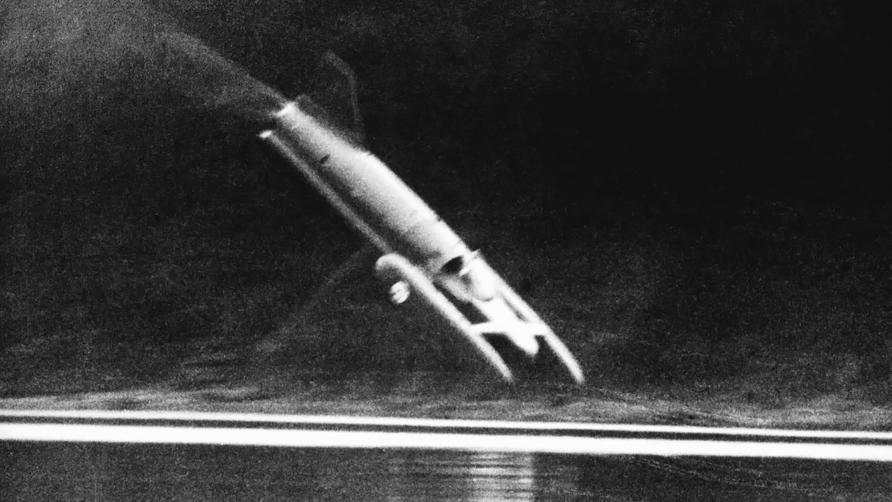
“The thing I remember most about that last run was trying, as he went past you, to follow him with your eyes. It was impossible to keep up,” says Anthony. “Your head was moving in stages, like a camera taking pictures. Click, click, click...”
What led to the next, fateful few frames of that mental picture has been debated ever since. Some even suggested suicide, with Campbell at a low ebb that winter, though those around him simply blame that upon the pressure he was under.
Which perhaps explains why Donald turned around between his necessary two runs with reckless haste. He was so keen to officially break the 300mph barrier that day, that upon hearing his first run averaged 297mph, he blasted eagerly back into the wash his boat had created, without the patience to let the water calm. The effect on K7’s aerodynamics as he sailed past 300mph simply became too much. Sinking after a huge somersault, just a few segments of its bodywork rose to the surface, alongside its skipper’s helmet and mascot, a teddy named Mr Whoppit.
As I gaze out, the water is awfully still, the lake beautiful but hauntingly quiet. Try as I might, I can’t begin to imagine the fury of Bluebird at its “ruddy fast” best on Coniston’s surface. But, if it’s a happy ending you seek, I may have something to offer. While the boat and its skipper lay at the bottom of the lake for over 30 years, a controversial recovery effort in 2001 (which saw Donald Campbell laid to rest in his spiritual hometown in the Lakes) could see K7 returned close to its former glory, and out on the lake again.
Our trip to see its current state of reassembly takes us 110 miles from England’s north-west to its north-east, which is all the excuse needed for one last blast in the F-Type. The Hartside Pass lies conveniently between us and K7’s Tyneside base, and as it wends its way over the Pennines like a leafier Stelvio Pass, I realise I’m quite a fan of the E-Type’s modern-day equivalent.
While not as energetic as the V8, this one is still blooming quick, and it remains a car in which you can’t resist cranking the window down an inch or two as you blare past the British countryside’s dry stone walls. On the outside, it’s pure class, but the mechanicals beneath incite your most immature behaviour. I can see why Donald loved Jaguars. And I can’t wait to see the boat he was so much in love with.
The restoration man - on a mission to bring Bluebird back
Coniston locals always knew roughly where Campbell and Bluebird lay, and it seemed the pair had been intentionally left to rest. But in 2001, hobbyist diver Bill Smith followed his own dream, heading into the lake to successfully find K7.
When the location of the skipper and his boat became public, there was little choice but to bring them to shore, for the safety of wannabe explorers, and to avoid Bluebird being stripped by trophy hunters. The controversy behind the whole thing still upsets some people close to the Campbells, but upon visiting Bill’s North Shields workshop, it’s impossible to stay completely objective. Seeing a large chunk of K7 is a moving experience.
While a space has been made for K7 in Coniston’s Ruskin Museum, Bill and his volunteers want the boat back in working order for a run on the lake, at up to 150mph. TG visited five years ago and while things have visibly progressed, Bluebird won’t return to the water soon.
“What takes the time?” says Bill. “I’ve got to learn everything. I’ve never done anything like this before. We go off photos; nothing was written or recorded when they were developing it. We found out the whole frame was a half-inch cock-eyed from the front from new, so we had to build it wonky to get it straight.”
When mistakes are deliberately engineered in, you know the restoration is meticulous. The engine is among a tiny handful of unoriginal parts. And where new labels were needed for the cockpit’s gauges, Gina helped source her dad’s machine, still with his roll of tape in it.
Why is getting K7 functioning again so key? “Bluebird is remembered for its one spectacular failure, yet it’s the most successful contender in history,” says Bill. “It held the water-speed record seven times.”
Trending this week
- Car Review
BMW 1 Series
- Top Gear's Top 9
Nine dreadful bits of 'homeware' made by carmakers






